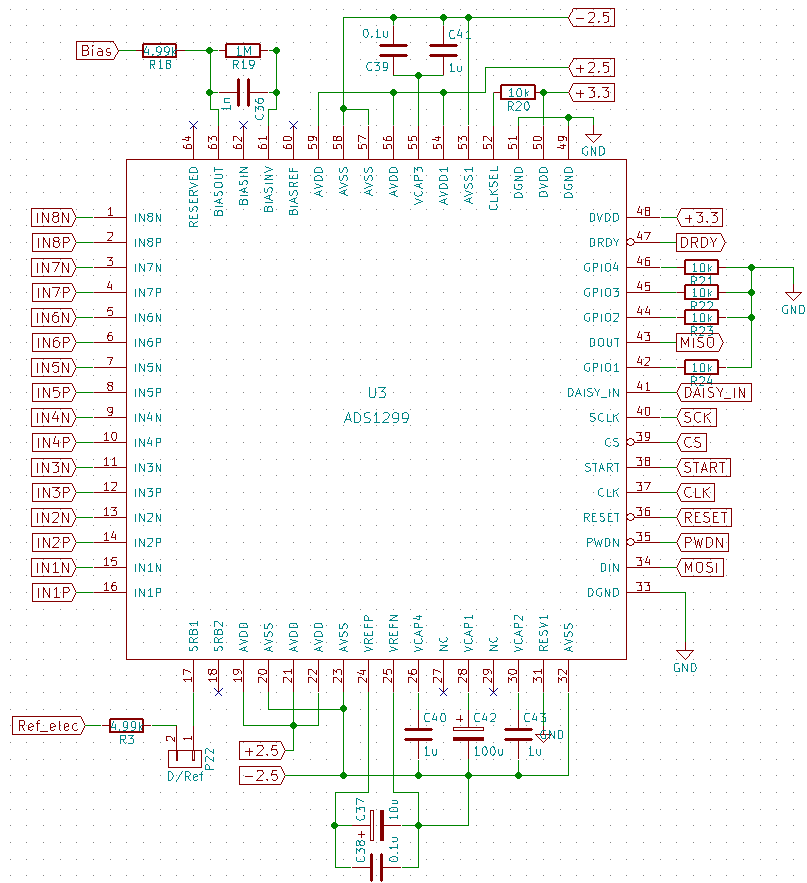Hi all,
I've built an EEG device based on an ADS1299. I'm using it to record EOG's now, working with CH1 and CH2 in differential mode, one for the horizontal and the other for vertical direction. I'm also using the Bias electrode, which I connect to the patient's ear lobe.
I have updated the bias filter to have a cutoff frequency below 50 Hz, instead of the 150 Hz recommended on the datasheet.
I am experiencing though some (random) wandering baseline and 50 Hz noise superimposed on the EOG signal. I need to remove this to get a proper measurement and due to the low frequencies I'm working with, digital filtering ends up adding distortion too.
I would like to confirm that the settings I'm using are correct:
- CONFIG3 = EEh (this is reference buffer powered up, internal biasref signal, bias buffer & sense enabled and bias connected).
- BIASSENSP = 03h (I'm using CH1 and CH2 here)
- BIASSENSN = 03h
Is there any configuration wrong or that I'm missing?
Thank you!



